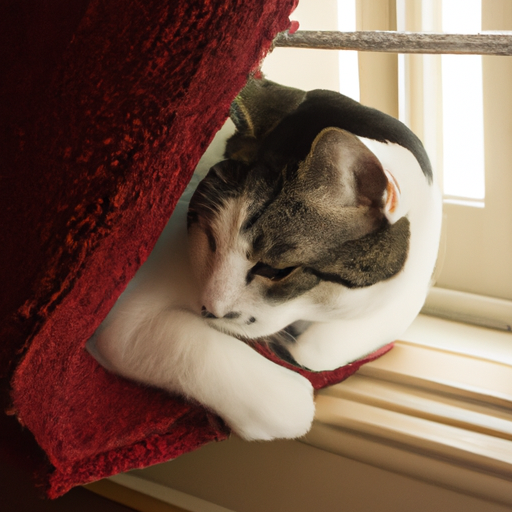How To Keep Cats Out Of Your Yard?
Are you grappling with the issue of unwelcome feline visitors frequenting your yard? Your beloved garden doesn’t have to become a local hangout for every Tom, Dick, and whiskered Harry. Let’s tackle this nuisance head-on. “How To Keep Cats Out Of Your Yard” gives you practical and useful methods you can implement right away to regain your outdoor oasis from those furry intruders. Manage and control these unwanted guests with strategies that respect your love for animals while protecting your yard. Your peace of mind, and possibly your tulips, depend on it.

Understanding the Feline Intrusion
There is nothing as serene as having a well-manicured garden or a yard and enjoying the beauty it offers. However, there can be a few unwanted visitors, such as cats, that seem to enjoy your yard as much as you do. Here’s an in-depth examination of why felines find your yard irresistible and how you can deter them while keeping your sanctuary lush and inviting.
Recognizing Cat Behavior
Cats are solitary yet curious creatures. When they frequent your yard, it’s often a pursuit of either exploration, hunting, or seeking a safe zone. Recognizing cat behavior is crucial in dealing with this issue. For instance, if they use your yard as their litter box, you’ll often find yourself cleaning up after them. Further, they also like to spray to mark territory, which might explain why you can’t get rid of the cat urine odor easily.
Why Cats Are Drawn To Your Yard
There are several possible reasons why cats are drawn to your yard. Perhaps your yard provides an attractive habitat like a fish pond or a bird feeder that offers a constant food source. Gardens with thick foliage can be an ideal hideout for them. Additionally, if you have a pet at home, cats might enter your yard due to the smell of your pet’s food or to socialize with them.
Concealing the Smells That Attract Cats
To deter your little feline friends from making frequent trips, you can try concealing the smells that attract them.
Consistent Cleaning of the Yard
Remember to clean your yard regularly as the smell of garbage or even another cat’s markings may attract more cats. Make it a routine to get rid of waste, particularly food waste, as it draws in cats.
Use of Odor Neutralizing Agents
Consider using specific odor neutralizers available in the market that can help combat the smell of cat urine and faeces. These are typically safe-to-use, environmentally friendly, and can be a powerful tool to keep cats at bay.
Creating Physical Barriers
Creating physical barriers is an efficient way to cat-proof your yard, allowing you peace of mind.
Use of Fences
Cats are agile creatures with the ability to climb. However, installing a high fence with a smooth surface could discourage them from entering your yard. Fences with roller bars at the top can provide an effective deterrent since cats can’t get a grip on them.
Installing Motion-Activated Sprinklers
Motion-activated sprinklers can be hugely effective. Cats dislike water, and when they trigger the sensor, they will get a surprising but harmless sprinkle, discouraging them from reentering.
Creating Uninviting Surfaces
Cats prefer soft and loose soil for their litter activities. Using stone or gravel, laying chicken wire beneath the soil, or even using prickly mats can make these areas unattractive to cats. They will eventually give up and find elsewhere for their needs.
Making Home-Made Cat Repellents
Home-made cat repellents can be a cheap and effective way of deterring feline invaders.
Preparing Citrus-Based Repellents
Cats dislike the smell of citrus. Consider spraying a solution of water mixed with the juice from a citrus fruit like orange or lemon around your yard.
Using Coffee Grounds and Other Disliked Smells
Laying down coffee grounds or other substances with strong odors, such as garlic or pepper, can drive cats away. However, remember to use substances that are non-toxic to cats and other animals.

Planting Cat Repellent Plants
Plants can serve a double purpose: beautifying your garden and deterring cats.
Choosing the Right Plants
The right choice of plants can discourage cats from visiting your yard. Cat-deterrent plants such as Coleus Canina (Scaredy Cat plant), Lavender, and Rosemary not only make your garden attractive but their smell is repugnant to cats.
Proper Placement of These Plants in the Yard
Place these plants around the borders of your yard, near the entrances, or close to where the cats usually appear. They will create a natural barrier that serves to ward off cats.
Using Commercial Cat Repellents
For those looking for a less labor-intensive solution, ready-made cat repellents are an option.
Effective Brands in the Market
There are numerous commercial cat repellents available. Most come in the form of sprays or granules and have varying degrees of success. Always ensure to use those which are safe and eco-friendly.
Methods of Application
Depending on the product, you might need to spray or sprinkle it around your yard. Keep in mind to reapply it after it rains or on a regular basis for the best results.
Training Your Neighborhood Cats
Alternatively, you can train the cats to stay away from your yard.
Working with Other Cat Owners
Talk to cat owners in your neighborhood and make them aware of the issues you’re facing. In most cases, they will be more than willing to help and may even take measures to prevent their pets from wandering into your yard.
Teaching the Cats to Associate Your Yard with Unpleasant Experiences
Using harmless yet effective methods such as water sprinklers, you can make the cats associate your yard with unpleasant experiences, making them think twice before reentering.
Engaging Wild Life Agencies or Animal Control
Should the feline issue persist, don’t hesitate to contact professionals.
When to Call the Professionals
It’s time to call professionals like your local Animal Control or wildlife agency when your efforts of deterring the cats seem to be failing and the situation is out of control.
How to Work in Collaboration with Them
These professionals can devise more effective strategies to combat the issue, given their expertise. Provide them with as much information as possible about the cats for targeted solutions.
Maintaining a Cat-Free Yard
It doesn’t end at having a cat-free yard. The goal is to keep it that way.
Routine Checks and Maintenance
Regularly evaluate your yard for signs of feline visitors, ensure fences and barriers are intact, and reapply repellent sprays or substances when necessary.
Involving the Community in Keeping Cats Away
Getting your community involved can help significantly. By educating the neighbors about effective methods, everyone can contribute to keeping the neighborhood cat-free.
Resorting to Humane Trapping
Humane trapping should be your last resort when all else fails.
Using Humane Traps
Various humane traps are available, designed to lure and catch the cats without causing any harm. It allows you to transport them away from your property.
Proper Handling and Release of Trapped Cats
Ensure you release trapped cats back into their environment, away from your home. Remember to handle them with care, respecting the life of the creature.
In conclusion, keeping your yard cat-free is a process that requires a combination of methods and constant effort. But with patience and consistency, you can achieve a peaceful, beautiful, and cat-free yard.






